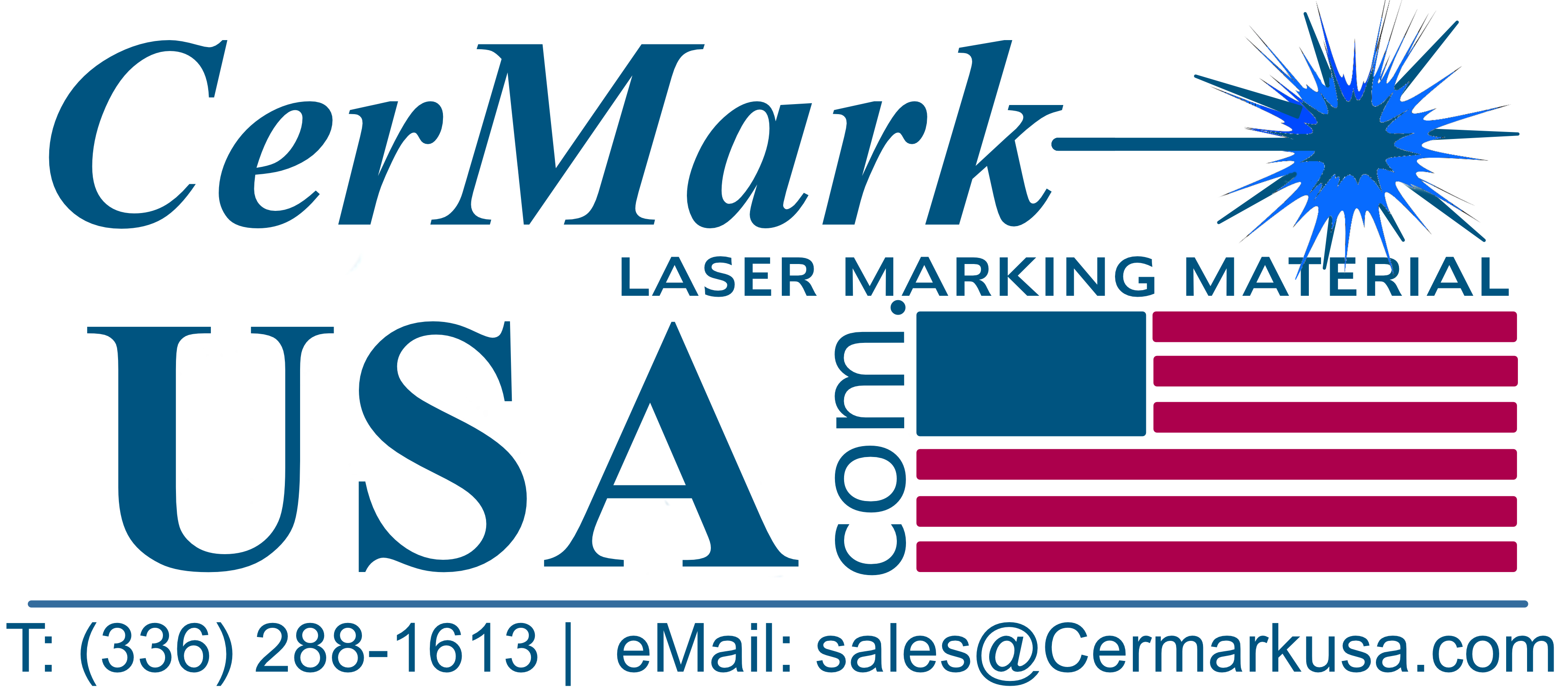Black On Metal
CerMark’s LMM series laser marking materials are specifically engineered to create high quality black marks on a wide variety of metals. The contrast, resolution, and durability of these marks make CerMark materials ideal for:
|
|
Compatible metals
There is an appropriately formulated CerMark material for almost every metal surface. The process window for creating high quality marks may vary depending on substrate composition and/or thickness, application method, and laser type. It is important to note that CerMark materials will not mark over or through clear coat. If you wish to mark a metal with a coating or lacquer, this layer must be removed prior to application of CerMark material. In some cases dual pass operation may be a good solution to this problem, where the coating is ablated during the first pass of laser marking after which the CerMark material is applied for final marking.
|
|
Which product to use
Choosing the correct TherMark/CerMark product for your marking needs depends on what your priorities and requirements are for both your mark and marking process. For some, the blackness of the mark is the determining factor, while for others a required production quota makes marking speed the most important consideration. In other situations, delivery method is a key factor: in some applications a liquid ink is not appropriate and a dry application method like a tape is preferred. Finally, some substrates are more challenging than others and require specialty products. The chart below gives some product recommendations based on a number of different considerations. We recognize that a combination of these factors will likely contribute to determination of the best product for your needs, so feel free to contact us for a consultation.
Laser Recommendations
Both CO2 and solid state lasers work well with most CerMark marking materials for making black marks on metal. For marking metals, we recommend a minimum of 25W of power for CO2 lasers, and 10W of power for solid state lasers. CO2 lasers tend to be more appropriate for manual or batch processing, while solid state lasers tend to be more appropriate for inline processing. Feel free to consult our Choosing a Laser section for more information on choosing a laser.
Marking Time
Exact marking speeds will vary depending on your choice of CerMark material, substrate composition, substrate thickness, laser power as well as the mode of operation, i.e. rastering or vectoring (for more information on variables that may affect your marking, click here). However, marking speeds with CerMark materials are often faster than in case of direct laser marking. For more information on marking speeds, please visit our Cycle Time section.
Substrate Protection
One of the clear benefits of using CerMark marking materials is they “protect” the substrate. Our materials absorb much of the laser energy before it gets to the substrate. This enables us to mark most substrates (including nickel or chrome plating and anodized surfaces) without any damage. This is in sharp contrast with direct laser marking which relies on burning the substrate to produce a mark.
